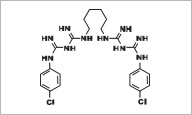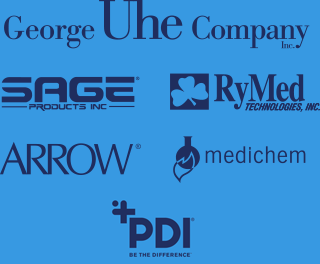Hospitals and communal areas are ideal environments to spread pathogens, including antimicrobial-resistant organisms like Methicillin-Resistant Staphylococcus aureus (MRSA) and Vancomycin-Resistant Enterococci (VRE). Implementing institutional strategies and utilizing tools designed to reduce infections are essential to ensure patient safety, reduce financial risk and achieve targeted infection rates. Chlorhexidine, in many applications, has become the gold standard for infection reduction and prevention.
Chlorhexidine is an ideal broad-spectrum antimicrobial. It is effective against Gram-positive bacteria, Gram-negative bacteria and fungi. These organisms are commonly associated with Healthcare-Associated Infections (HAIs).11 With its low toxicity level, chlorhexidine offers a safe side effect profile.10, 11
For nearly 60 years, chlorhexidine has been used by hospitals and clinics as a disinfectant and antiseptic for topical and hard-surface applications. Chlorhexidine has become an integral part of the strategy to prevent the transmission of disease and nosocomial infections.1
"Mandatory public reporting and pay for performance force infection control issues to the forefront, and chlorhexidine-containing products may provide a vast armamentarium for the control and prevention of HAI."13
Aaron M. Milstone, M.D.
Assistant Professor of Infectious Diseases
Johns Hopkins Children's Center

